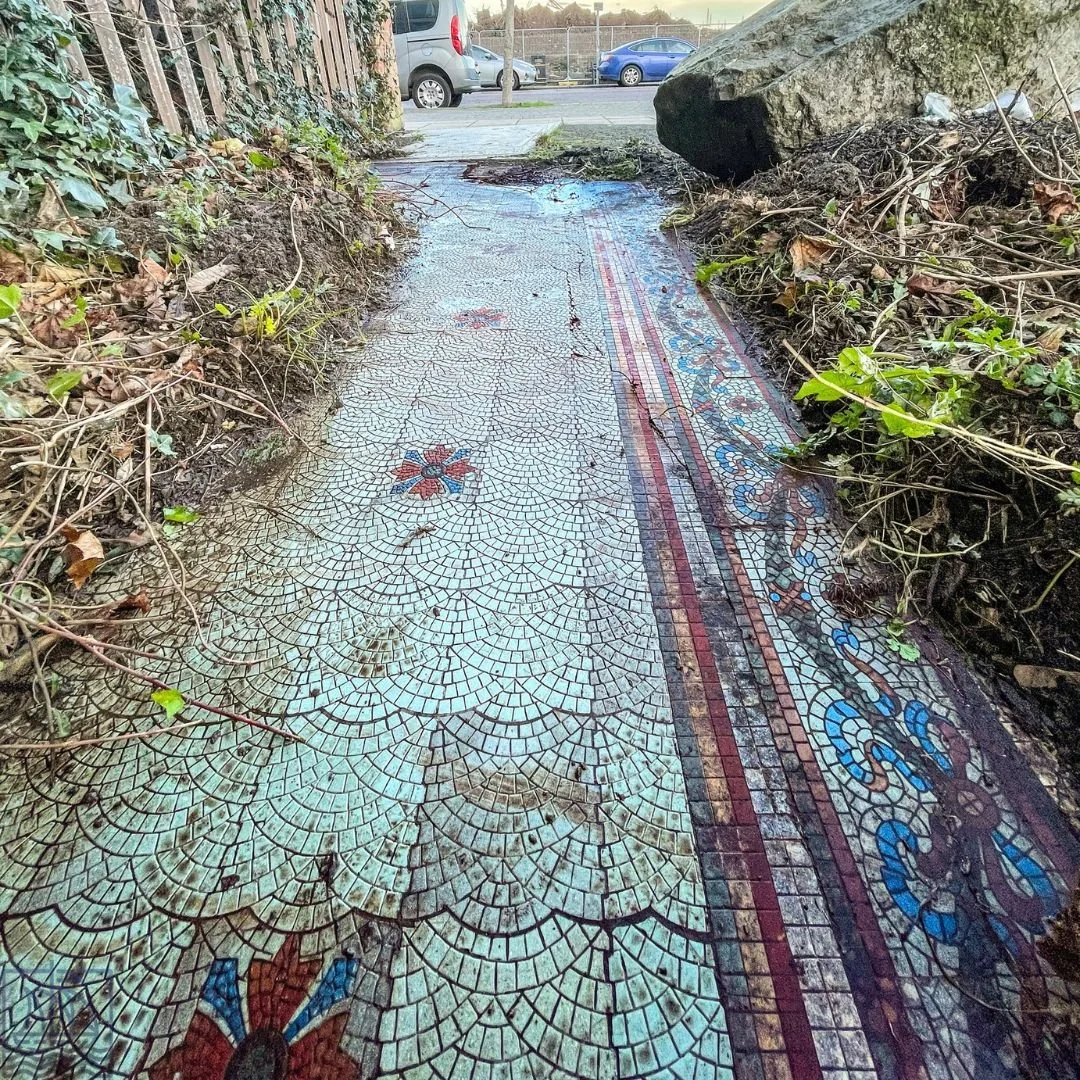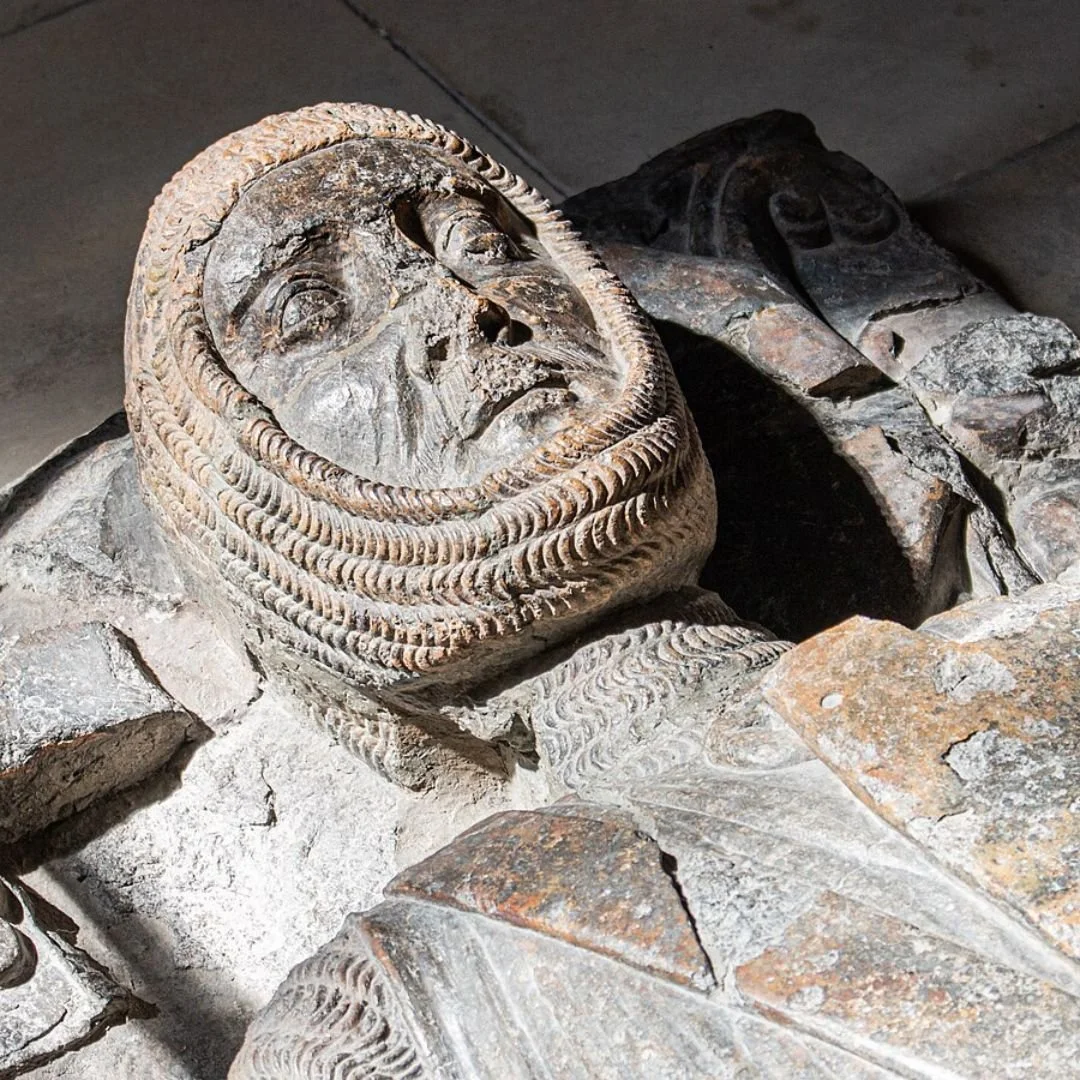The Portland Stone Alcove of Old London Bridge
This Portland stone alcove in Victoria Park, London is an original survivor from the famous Old London Bridge, which stood for more than 600 years.
It was originally installed on the bridge between 1760 and 1763, after all the crowded medieval houses and shops were cleared away to widen the roadway.
Fourteen of these domed recesses were placed along the bridge, intended to offer pedestrians a place to rest and shelter from the weather and the busy traffic.
Only four are known to survive today.
Dating from 1176 to 1831, the iconic bridge was an engineering masterpiece and a defining feature of London for six centuries.
Unlike modern crossings, it was a thriving street, densely packed with as many as 200 buildings, including houses, shops, and even a chapel, balancing precariously over the Thames.
It was the subject of the famous nursery rhyme, and it stood as the gateway to the city.
By the mid 18th century, the bridge was overcrowded and structurally obsolete.
Between 1760 and 1763, all the buildings were cleared to widen the roadway from a perilous 20 feet to a more manageable 46 feet.
As part of this major remodelling by architects Sir Robert Taylor and George Dance, fourteen stone alcoves, seven on each side, were installed.
They were crated from durable Portland stone.
This distinctive white-grey limestone, quarried from the Isle of Portland in Dorset, was the material of choice for London's grandest public buildings following the Great Fire of 1666 (including St Paul's Cathedral).
Its enduring quality has allowed the alcove to survive centuries of London weather and pollution.
The semi-circular alcoves served several vital functions.
They offered shelter, a place for pedestrians to rest or take cover from the elements, and refuge. The road was notoriously narrow and busy, and the alcoves provided a small area of safety from passing carts and carriages.
Ironically, concerns arose that the recesses might also be used by robbers to ambush passersby, leading to the appointment of night watchmen.
The alcoves also captured the imagination of several writers, most famously Charles Dickens.
In David Copperfield, Dickens describes his protagonist's connection to the bridge, likely drawing on his own memories: "I was often up at six o'clock, and my favourite lounging place was old London Bridge, where I was wont to sit in one of the stone recesses, watching the people go by, or to look over the balustrades at the sun shining in the water."
This quote confirms the alcoves' function as places of rest and quiet observation amidst the chaos of the bridge.
Interestingly, the alcove’s semi-circular structure creates a curious acoustic property, often likened to the "Whispering Gallery" of St Paul's Cathedral.
A whisper on one side of the curve can be distinctly heard at the opposite end.
Historically, this was more than a novelty. On the incredibly noisy Old London Bridge, filled with the din of traffic and trade, this acoustic effect provided a practical advantage, allowing occupants to hold a quiet conversation that would otherwise be drowned out.
This unique feature continues to be a favourite test for visitors today.
By the early 19th century, London's rapidly increasing traffic necessitated a brand new crossing.
The "Old London Bridge," of which the alcoves were a part, was ultimately demolished between 1824 and 1831, replaced by John Rennie's structure (the one later sold to an American and shipped to Arizona).
During the deconstruction, most of the bridge was scrapped or dumped, but a handful of the valuable Portland stone alcoves were salvaged and sold off as architectural salvage.
Of the original fourteen, only four are known to survive today.
Two of these cherished survivors were donated to the newly opened Victoria Park in 1860 by Benjamin Dixon, a local Justice of the Peace.
They were re-erected in the park, near the Cadogan Gate entrance, where they have stood ever since.
Inside one of the Victoria Park alcoves, a plaque confirms their origin: "This alcove which stood on Old London Bridge was presented to her Majesty by Benjamin Dixon esq. j.p. for the use of the public and was placed here by order of the right honourable w. cowper first commissioner of her Majesty's works and public buildings 1860."
Two other alcoves remain in London: one in the grounds of Guy's Hospital in Southwark (hosting a statue of poet John Keats), and another in a private garden in East Sheen.
Today, the pair of Grade 2 listed alcoves in Victoria Park continue to provide shelter and rest for park visitors, having survived the Blitz, the Great Storm of 1987, and countless generations of Londoners.
Another survivor of Old London bridge is this Portland stone balustrade (pictured below) that formed the roadway's parapet.
One of the individuals who acquired this historic fragment was Thomas Usborne, a successful London merchant who purchased the Gilwell estate in Essex in 1824.
Usborne bought a significant section of the stone balustrade when the bridge was being dismantled around 1831.
Acquiring such relics was a popular trend among wealthy landowners, allowing them to lend prestige and a sense of historical grandeur to their private estates.
Usborne had the long section of balustrade erected on the grounds of Gilwell Hall, where it was repurposed to line the edge of the Buffalo Lawn near the main house, where it still stands today.
Originally, the primary purpose of the balustrade, like any parapet on a bridge, was safety and enclosure.
It functioned as a low wall to prevent pedestrians, horses, and carriages from falling from the roadway into the River Thames below.
If you enjoyed this blog post, please do follow Exploring GB on Facebook for more!
Don’t forget to check out our latest blog posts below.
thank you for visiting Exploring GB :)



















